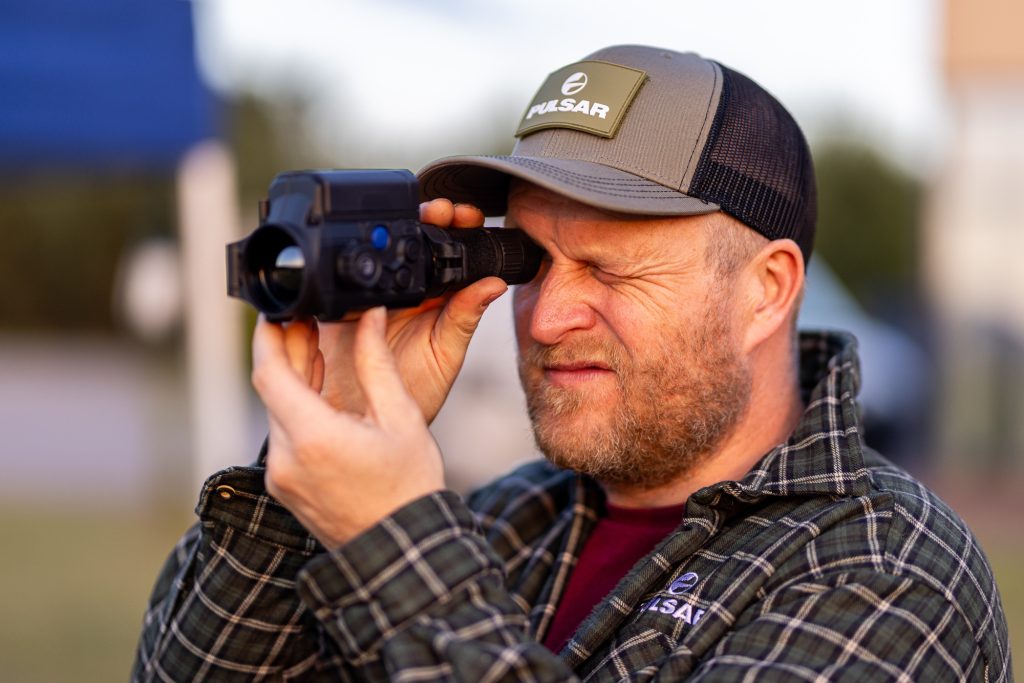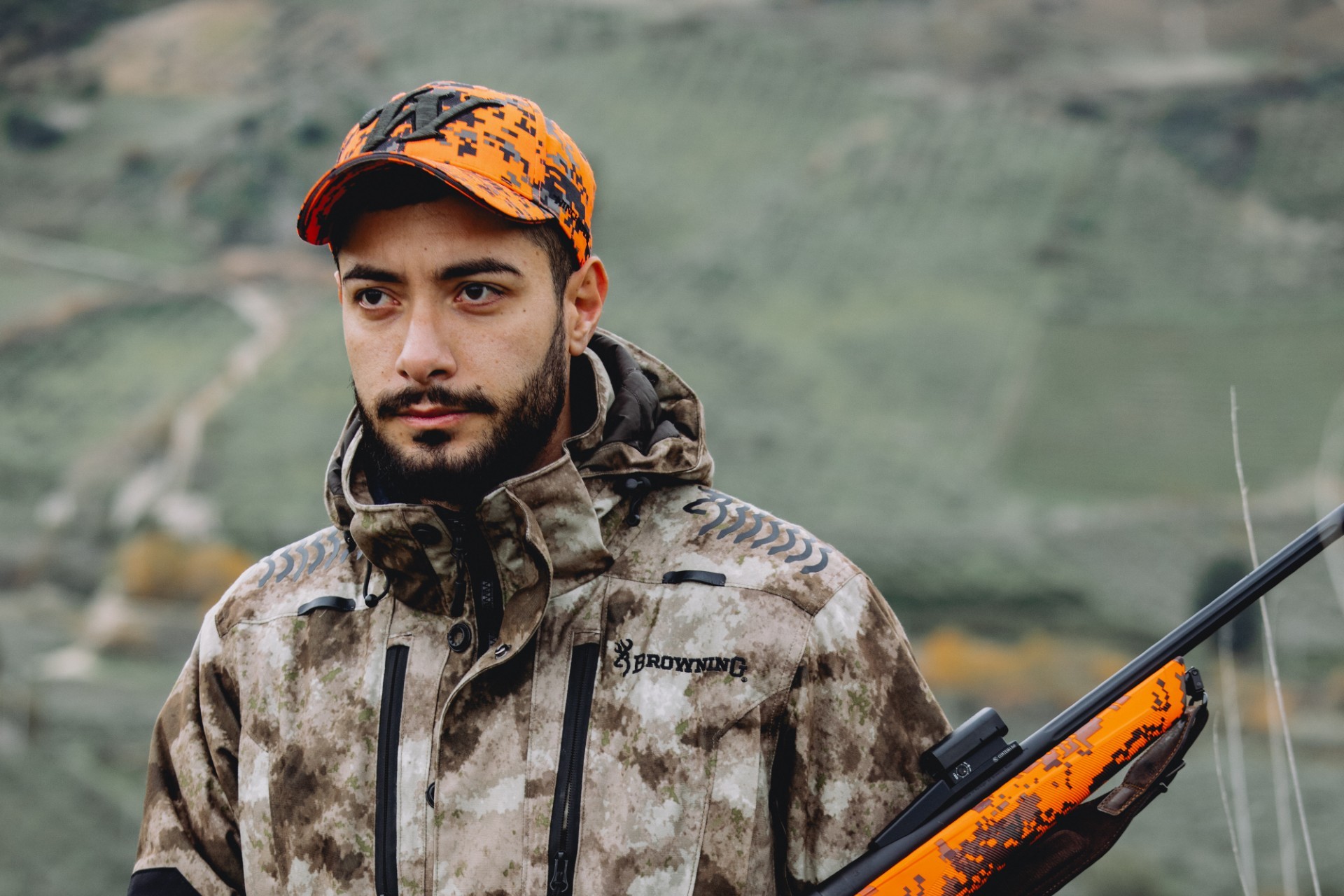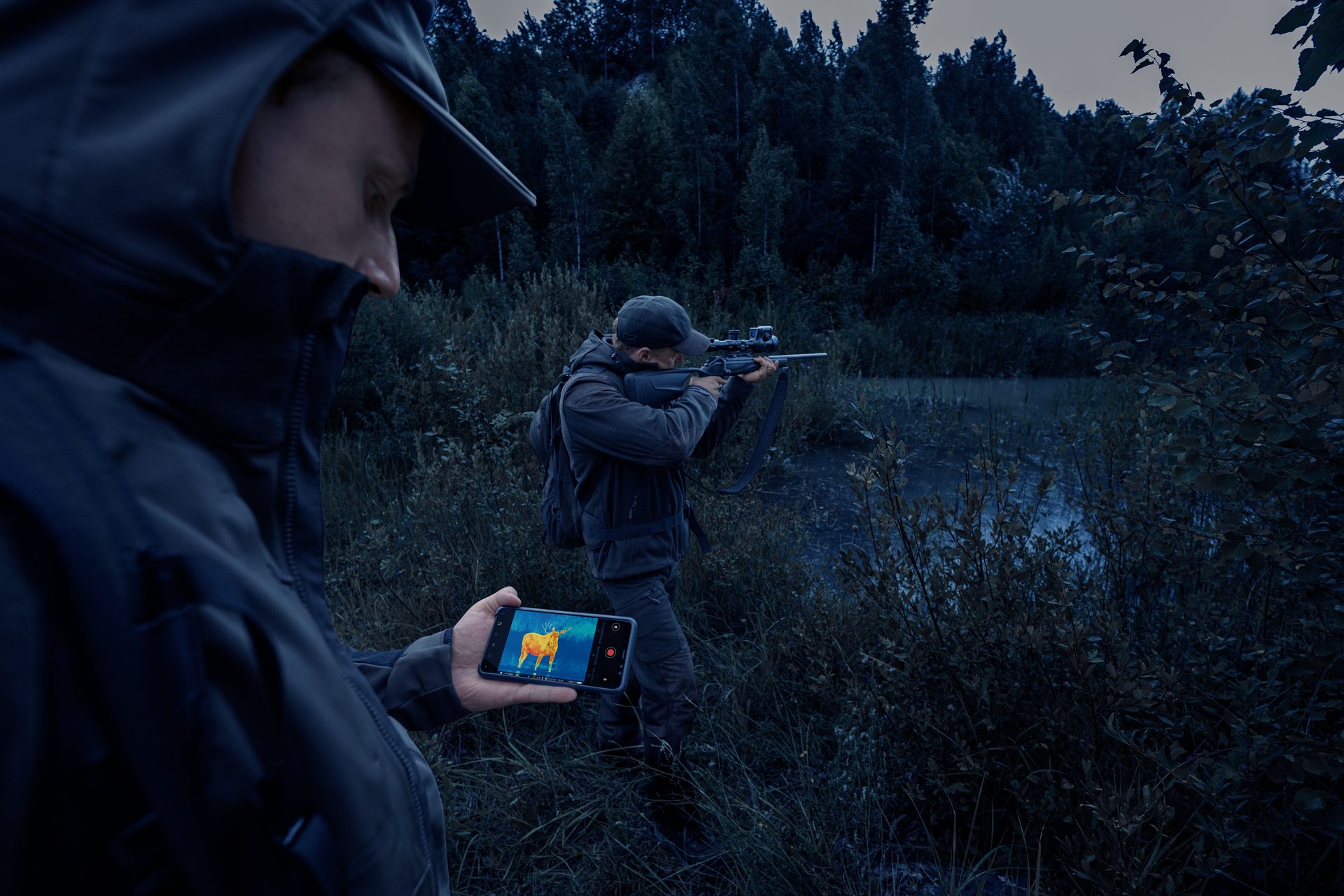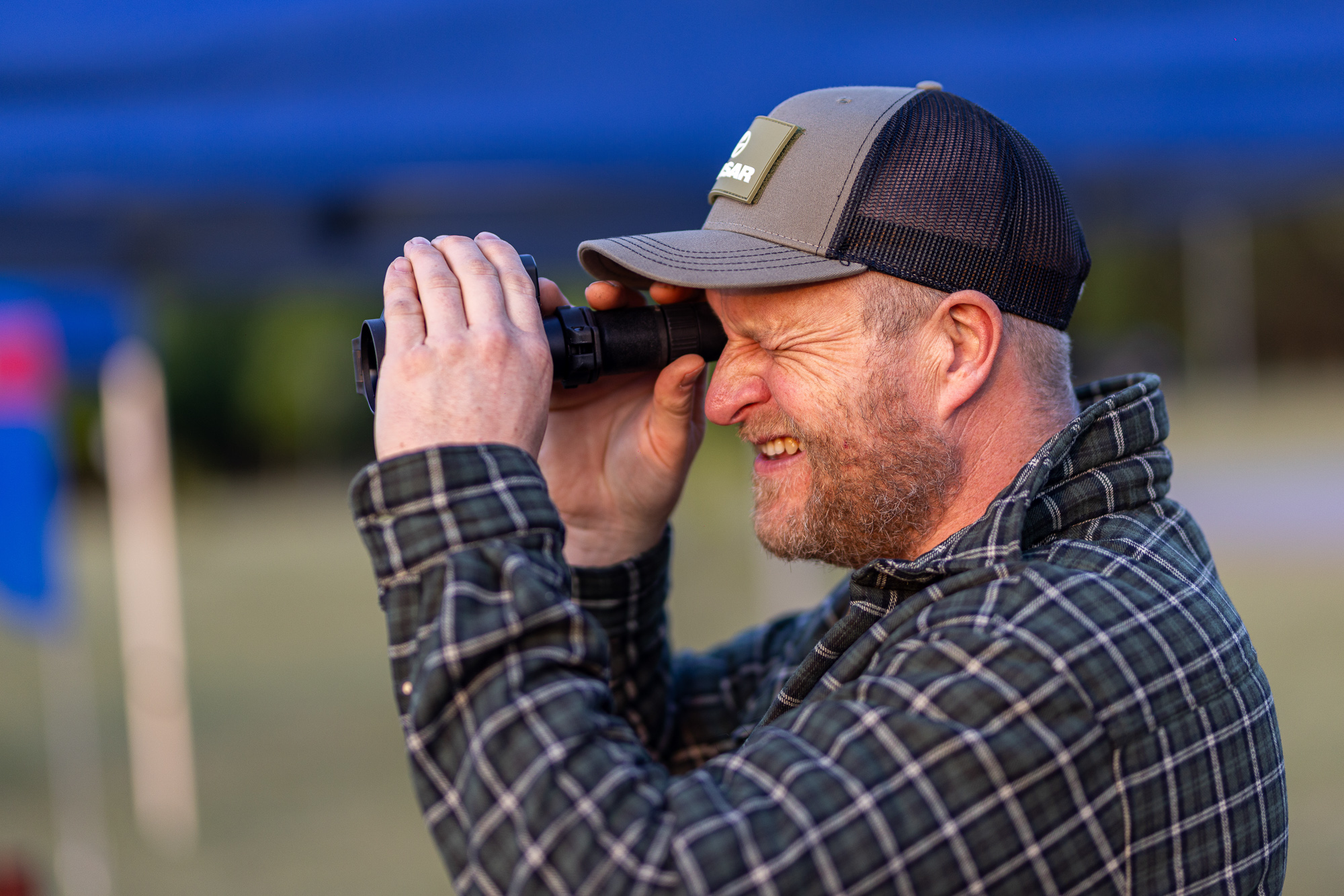Expert Contributor:
Peter Gibbon, Vito Cortese
When people picture a hunter, they usually imagine someone moving quietly through the woods – alone and focused. While many hunters enjoy the peace and independence that solo hunting brings, there’s another side to the experience: the shared laughs, teamwork, and connection that come with hunting alongside others. Whether hunting solo or with a group, both styles shape how hunters move, think, and use their gear in the field.
Two passionate hunters – Peter Gibbon from North East Scotland and Vito Cortese from Sicily – shared how community, tradition, and technology shape their time in the wild. Their answers show that hunting isn’t just about the target – it’s about who you connect with in the field, and how that changes everything.
- Peter Gibbon
- Vito Cortese
Solo or social?
For Peter Gibbon, both solo and group hunting have their place. But in recent years, the pull of community has grown stronger. “These days I tend to enjoy hunting with others more. It’s great to share the experience, have a laugh, and just enjoy being out there together,” he says. When hunting with a group, he adjusts his kit: “I might bring extra gear for safety and communication. When I’m solo, I keep it simple and only take what I really need.”
These days I tend to enjoy hunting with others more. It’s great to share the experience, have a laugh, and just enjoy being out there together.
Peter Gibbon
Vito Cortese speaks passionately about his love for company, and his hunting style reflects it. “I always prefer to hunt in company, and this greatly influences the use of my equipment during hunting days; my backpack is always full of things to eat and to share with my hunting companions, and some extra ammunition just in case,” he shares. He even chose his Pulsar Oryx monocular with his hunting partner in mind: “My companion needs to be able to see what I see not only during the day, but also during the night.”
Solo time: where focus and reflection meet
Still, both hunters recognize the unique clarity that comes from being alone in the wild. “Hunting on my own is like hitting a reset button,” Peter explains. “It’s quiet, there’s no pressure, and I can just focus on the moment. I only have to look after myself, which makes everything a bit more straightforward. It’s also a good chance to really think and enjoy the peace.”
Vito sees solo time differently – not as a preference, but as a moment that still brings connection: “Without someone by my side, I would have no one to whom I could tell my knowledge. I could not share what I have learned.”
The mental shift between solo and group hunting is real, but neither person feels it changes who they are. “I’m the same either way,” Peter says. “My confidence and focus stay pretty steady – it’s just a different kind of experience depending on who I’m with.” Vito agrees: “Certainly emotions will change, but never my identity as a hunter. Whether alone or with company, instinct, senses, and self-confidence are not things that can change.”
Teamwork in the field: planning, sharing, supporting
In social hunts, the spirit of teamwork often leads to better results – and better memories. “You get to share the highs and lows, enjoy each other’s company, and work as a team,” Peter says. “Teamwork also means you can plan better and cover more ground.” For practical reasons, too, having help matters: “Dragging or carrying out game is no small task.”
Vito sees group hunts like collaboration in a creative workshop: “Companion hunting is like the brainstorming process when you are working in a company, researching a new technology. Every piece of advice, word, or glance from those who are hunting with you can make that day worthwhile.” But even in casual groups, structure plays a role. “A leader who is knowledgeable, proactive, and well-versed in the use of new technologies is a must for a team that wants to achieve the most,” he adds.
Companion hunting is like the brainstorming process when you are working in a company, researching a new technology. Every piece of advice, word, or glance from those who are hunting with you can make that day worthwhile.
Vito Cortese
Gear that connects
Both hunters place a strong emphasis on mentorship, and gear plays a crucial role in opening doors for others. “I really enjoy bringing new people into hunting,” Peter says. “I let them try out my gear – like thermals and optics – which helps them see things they might miss otherwise.”
Vito has done the same with his cousin: “The fact that I work with several companies in the hunting world and have access to expensive equipment has allowed him to become more and more interested in new technologies.” The tech doesn’t just help the beginner see better – it helps them feel more confident, included, and inspired.
Tradition, storytelling and the connection
For both Peter and Vito, tradition isn’t something to outgrow – it’s the foundation of their hunting life. Whether in the Scottish Highlands or the hills of Sicily, passing down stories, skills, and values is what keeps hunting meaningful. “It’s key to teach people the right way – not just the how, but the why,” Peter says.
Technology may shape the tools, but it doesn’t replace the human connection. As Vito explains, “Even today, many hunters look at new technologies the way children look at new and unseen things, with admiration, awe, and maybe a little fear.” That blend of reverence for the past and curiosity for the future is what defines today’s hunter. For both men, gear is not a distraction – it’s a way to make tradition visible, to show and share the experience more clearly. As Peter puts it, “At the end of the day, it’s still about sharing stories, lessons, and time together in the field.”
Why do they keep sharing?
Both Peter and Vito are active in the Pulsar community, and both say it’s the community that keep them inspired. “It’s opened the door to conversations with hunters across Europe,” Peter shares. “I’ve been lucky enough to share some of those stories with my podcast audience.”
Vito agrees: “Personally, what drives me to do what I do is my propensity to help those who look at me, solve their problems, advise them of ways of experiencing hunting perhaps still unknown to some, in such a way as to make it all nicer and easier.” And it started with a dream: “Joining Pulsar was my dream since childhood. I remember the look on my father’s face at fairs, looking at Pulsar products with pride.”
It’s clear: whether walking alone or side by side, what truly powers a hunt isn’t just the gear – it’s the stories, the memories, and the people behind them.




